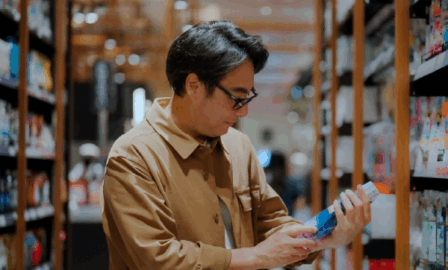How to Manage Supply Chain Disruptions in the CPG Industry
Supply chain disruptions have caused shortages of countless items that we used to take for granted – toilet paper, masks, baking ingredients, pizza cartons & dumbbells. Everyone has experienced searching for an item of choice and has been dismayed by the unthinkable lead times or costs to purchase what has become a sacred item. Many shortages were prompted by COVID-19 and recoveries have been challenged by anything from storms to canal blockages.
To gain insight that spans the industry, we will zoom into one simplistic example: dumbbells. COVID-19’s shortage for dumbbells highlights underlying supply chain lessons learned that can be expanded to insights that apply across the industry. It is clear that the lessons learned are widely applicable and will continue, if not addressed.
Efficient Supply Chains Cannot Withstand Unprecedented Surges in Demand
Closed gyms and stay at home orders led to extraordinary surges in demand for fitness equipment. Fitness enthusiasts had to pivot their workout habits and needed equipment, like dumbbells, to support the transition. Per USA Today, popular dumbbell brands saw an increase of up to 600% in 2020 compared to 2019. Fitness companies were overwhelmingly underprepared for the unprecedented volatility in demand, as their supply chains were built entirely on efficiency. Cost cutting was prioritized over resilience and there was limited to no opportunity to meet demand beyond what was initially forecasted. This led to stockouts for months and dumbbells being resold for unimaginable prices.
Comparable to dumbbells, many companies within the CPG industry overly emphasize efficiencies and are challenged to recover from supply chain disruptions. Another overoptimized lean supply chain includes that of paint which was disrupted due to a shortage of key supplies during Texas’s winter storm that impacted the petrochemical network. CPG companies find themselves out of stock because they de-emphasize resilience at the expense of cost cutting. However, trading a degree of efficiency for resiliency can be favorable. CPG companies need to align their supply chain strategy to their product’s demand volatility and implement a supply chain resilience program. We have created a Supply Chain Resilience Assessment that will help companies determine how ready they are for future disruptions.
Lack of Supply Network Flexibility Leads to Challenges
Staying with our exemplary case of dumbbells, fitness companies did not invest in supply network flexibility to protect against supply chain disruptions. In fact, 95% of dumbbells are produced in China, meaning there are negligible backup manufacturing locations and there is limited redundancy built in to protect against supply chain disruptions. China was impacted first by the COVID-19 pandemic making it a challenge to replenish dumbbells from the onset of the pandemic’s demand surges.
The supply network flexibility of many companies is not suitable. For instance, most thermometers are also produced in China. This caused similar impacts in 2020 when there was an increase in the purchase of thermometers as people were testing for the symptoms of COVID-19. This not only disrupted thermometer production, but also had downstream ramifications. Businesses that required thermometers to continue manufacturing their products also felt unpredicted disruptions in their supply chain. This was, also, evident in the cardboard supply chain. The spike in pizza consumption coupled with increased DTC shipments impacted a wide range of other products and industries that couldn’t find enough cardboard to conduct their normal supply chain. From this we understand that CPG companies need to make well-reasoned investments in supply network flexibility to manage during potential supply chain disruptions.
Start with understanding the network using supply network mapping to identify risks. Then, consider how to mitigate the risks identified by investing in backup manufacturing locations and redundancy. Consider the inventory strategy and if you can hold stock closer to customers to protect against demand fluctuations.
Immature Systems & Processes Lead to Limited Visibility
Traditionally, dumbbell product sales are volatile, and change based on the season. For instance, sales peak with New Year’s resolutions and in preparation for summer. This seasonality leads to complexity within the supply chain and make it difficult to forecast.
Companies that experience seasonality and unpredictable demand would benefit from having data and systems in place to give visibility to demand and potential disruptions. Planning software and Integrated Business Planning are key under these circumstances.
There are an abundance of challenges and lessons to be learned from supply chain disruptions. Rethinking degrees of efficiency, implementing a supply chain resilience program, conducting supply network mapping, and applying integrated business planning are just a few strategies to combat supply chain challenges. It is crucial to take time to reflect on the challenges and leverage them to become well positioned for the next disruption. Do not allow the level of stockouts the world’s supply chains are experiencing to persist.
Subscribe to Clarkston's Insights
Contributions by Mikayla Doane and Maggie Wong



